
Vol. 69, No. 2
Spring/Summer 2016
Spring/Summer 2016
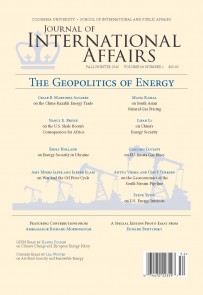
Vol. 69, No. 1
Fall/Winter 2015
Fall/Winter 2015

Vol. 68, No. 2
Spring/Summer 2015
Spring/Summer 2015
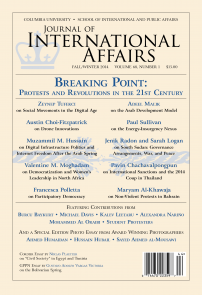
Vol. 68, No. 1
Fall/Winter 2014
Fall/Winter 2014

Vol. 67, No. 2
Spring/Summer 2014
Spring/Summer 2014
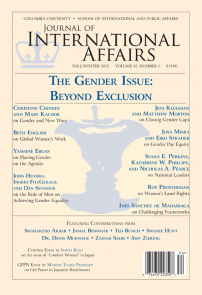
Vol. 67, No. 1
Fall/Winter 2013
Fall/Winter 2013
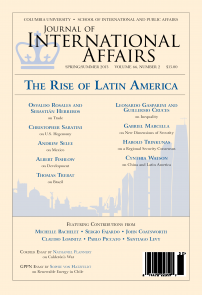
Vol. 66, No. 2
Spring/Summer 2013
Spring/Summer 2013
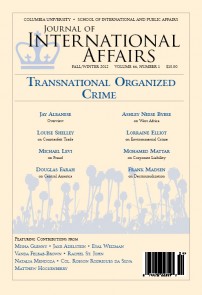
Vol. 66, No. 1
Fall/Winter 2012
Fall/Winter 2012

Vol. 65, No. 2
Spring/Summer 2012
Spring/Summer 2012

Vol. 65, No. 1
Spring/Summer 2011
Spring/Summer 2011
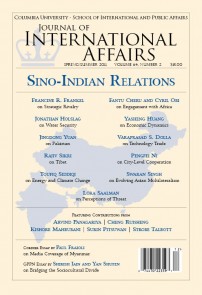
Vol. 64, No. 2
Spring/Summer 2011
Spring/Summer 2011

Vol. 64, No. 1
Fall/Winter 2010
Fall/Winter 2010

Vol. 63, No. 2
Spring/Summer 2010
Spring/Summer 2010

Vol. 63, No. 1
Fall/Winter 2009
Fall/Winter 2009

Vol. 62, No. 2
Spring/Summer 2009
Spring/Summer 2009
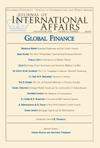
Vol. 62, No. 1
Fall/Winter 2008
Fall/Winter 2008

Vol. 61, No. 2
Spring/Summer 2008
Spring/Summer 2008

Vol. 61, No. 1
Fall/Winter 2007
Fall/Winter 2007
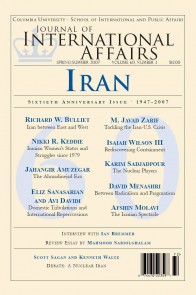
Vol. 60, No. 2
Spring/Summer 2007
Spring/Summer 2007

Vol. 60, No. 1
Fall/Winter 2006
Fall/Winter 2006

Vol. 59, No. 2
Spring/Summer 2006
Spring/Summer 2006
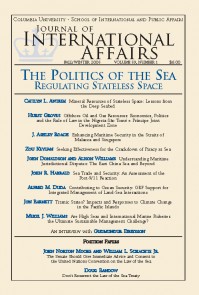
Vol. 59, No. 1
Fall/Winter 2005
Fall/Winter 2005

Vol. 58, No. 2
Spring/Summer 2005
Spring/Summer 2005

Vol. 58, No. 1
Fall/Winter 2004
Fall/Winter 2004

Vol. 57, No. 2
Spring/Summer 2004
Spring/Summer 2004

Vol. 57, No. 1
Fall/Winter 2003
Fall/Winter 2003
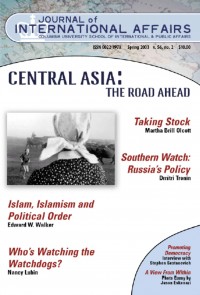
Vol. 56, No. 2
Spring/Summer 2003
Spring/Summer 2003
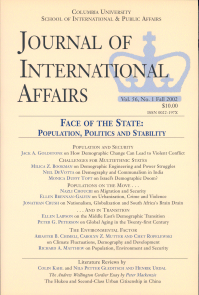
Vol. 56, No. 1
Fall/Winter 2002
Fall/Winter 2002

Vol. 55, No. 2
Spring/Summer 2002
Spring/Summer 2002
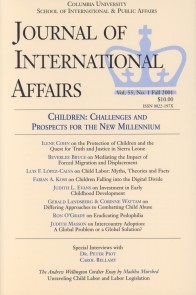
Vol. 55, No. 1
Fall/Winter 2001
Fall/Winter 2001

Vol. 54, No. 2
Spring/Summer 2001
Spring/Summer 2001

Vol. 54, No. 1
Fall/Winter 2000
Fall/Winter 2000
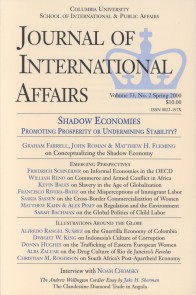
Vol. 53, No. 2
Spring/Summer 2000
Spring/Summer 2000

Vol. 53, No. 1
Fall/Winter 1999
Fall/Winter 1999

Vol. 52, No. 2
Spring/Summer 1999
Spring/Summer 1999

Vol. 52, No. 1
Fall/Winter 1998
Fall/Winter 1998
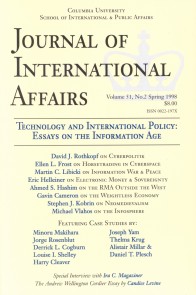
Vol. 51, No. 2
Spring/Summer 1998
Spring/Summer 1998

Vol. 51, No. 1
Fall/Winter 1997
Fall/Winter 1997
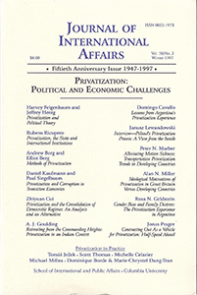
Vol. 50, No. 2
Winter 1997
Winter 1997
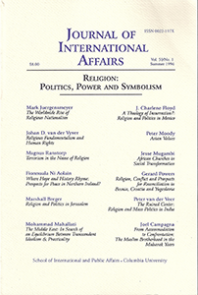
Vol. 50, No. 1
Summer 1996
Summer 1996
The Future of the City
Vol. 65, No. 2, Spring/Summer 2012Andrew Wellington Cordier Essay
Refurbishment as a Sustainable Urban-Design Strategy
By Zachary Craun
Regions Eastern Europe , Southern Europe
Regions Eastern Europe , Southern Europe
More on this article
As the world’s population moves from rural regions to urban centers, it is imperative to design policies and physical environments that can accommodate such a massive influx. In response, many countries have been building cities from scratch, clearing greenfield sites and building at an extremely rapid pace. Additionally, existing urban centers have been slow to respond, instigating suburban sprawl. A new conceptual framework is needed, one in which existing buildings and infrastructures can be seen as spaces for grafting and injecting additional density and public space. A marriage of the philosophies of Jane Jacobs and Robert Moses is required, recognizing important cultural centers and economies, while allowing new buildings, infrastructures and ecologies to be incorporated in harmonious coexistence. In order to create alternative urban-design strategies, it is beneficial to study Spain, whose history and architectural philosophy has promoted a healthy relationship between the urban-planning policies of the past, present and future.
Article
“Green” as Spectacle in China
By Xuefei Ren
Regions Eastern Africa , Eastern Asia , Global Commons
Regions Eastern Africa , Eastern Asia , Global Commons
More on this article
In recent years, environmental protection has increasingly been incorporated into municipal policy agendas in China. Although rising environmental awareness is an indicator of progress toward sustainable practices, a closer examination of recent policies reveals a tendency toward “spectacularization,” i.e., municipal governments actively endorsing various green initiatives to stage “spectacles” that promote their cities. This article critiques green spectacles and urges a return to the “ordinary” in urban environmental policy making, in which urban spaces would be developed based on a city’s unique needs rather than with a predetermined template. This would require abandoning costly flagship eco-city projects and top-down policy campaigns, as well as reflecting critically on what “green” means in everyday city life.
Religious Fundamentalisms in the City: Reflections on the Arab Spring
By Nezar AlSayyad and Mejgan Massoumi
Regions Western Asia
Regions Western Asia
More on this article
Around the world, we are witnessing new forms of organization, grassroots mobilization, activism and popular uprisings, all seeking democratic change and social justice. These events evoke both optimism and pessimism about our abilities to predict the future of cities in today’s Global South. Confronted by a growing landscape of poverty, rising inequality in the global economy and acute socio-spatial polarization, we must ask what accounts for these new patterns. Does the reasoning apply equally to cities worldwide or does it exist only within the context of specific urban geographies? Perhaps the most recent and dramatic transformation within the global urban landscape is the Arab Spring. As people in various parts of the Arab world embark on their quest for self-governance, there is no telling where this great experiment will lead. Based on current indications, religion will play a decisive role in shaping the futures of these nations, and particularly their cities. Our aim in this article is to explore the urban processes by which religious movements transform into fundamentalist ones, and how that process may reshape cities.
Governing the Twenty-First-Century City
By Ester R. Fuchs
Regions Northern America
Regions Northern America
More on this article
This article examines the linkages between urban governance structures and an economically successful and environmentally sustainable democratic city. It will consider both developed and developing cities and the policy challenges that confront them in the twenty-first century. It is important to understand the political causes of urban economic decline, the unique fiscal and legal constraints on city governments and the opportunities for democratic participation and sustainable economic growth that only cities can offer. Urban policies or programs are only successful if they harmonize with city politics and with a city government’s fiscal and operational capacity for implementation. The objective of this article is not simply to present the challenges of governing the twenty-first century city, but also to describe the structural characteristics of cities that promote democratic participation, effective urban governance and policies that support public safety, economic growth and environmental sustainability.
The Paris Banlieue: Peripheries of Inequity
By Marc Angélil and Cary Siress
Regions Eastern Europe , Western Europe
Regions Eastern Europe , Western Europe
More on this article
Debates on contemporary urban conditions often center on the periphery of the city where an ever-increasing proportion of the urban population is forced to live. This article focuses on the banlieue—the periphery of Paris—as a model for the breakdown of the spatial order in cities globally. We examine how France’s urban planning, guided by political and economic influences, has created and sustained banlieue poverty and marginalization. With rising anxieties about civil disorder in Paris resulting from the spatial inequities and cultural stigma toward the banlieue, it is now generally agreed that the city’s historical planning policies have failed. We argue that any attempt to allocate space within a city equitably cannot emanate from the city center alone, but must also come from the marginalized periphery, which is equally a part of the system.
Planning for Success: Singapore, the Model City-State?
By Joan C. Henderson
Regions Eastern Africa , South-Eastern Asia
Regions Eastern Africa , South-Eastern Asia
More on this article
This article discusses issues of development in Singapore and their implications for other rapidly growing urban areas in Asia. Formerly a British colony, the multiethnic republic of Singapore has flourished in the nearly fifty years since achieving independence. The article explores Singapore’s distinctive economic and political systems and assesses official approaches to plan both its physical and sociocultural environments. It also discusses how Singapore’s foreign policy impacts the country’s role as a popular tourist destination. The city-state’s government has critics, but Singapore’s efficiency, economic successes, safety and security are impossible to deny. However, maintaining momentum and securing sustainable growth will be a challenge for policy makers in the years ahead due to new domestic and international uncertainties. While Singapore’s experiences are unique, analysis of this city-state helps illuminate both development processes at work in Asia and methods for managing such changes. Given the projected expansion of Asian metropolitan areas, dealing effectively with the problems that arise alongside urbanization is a critical task confronting authorities across much of the region.
Urban America: U.S. Cities in the Global Era
By Richard C. Longworth
Regions Northern America
Regions Northern America
More on this article
This article considers the impact of globalization on American cities and how these cities will function and compete in a global economy. It argues that almost all American cities grew from an original economic raison d’être, greatly shaped by the industrial era. The end of that era and the arrival of a new economy affect their utility, for better or worse. Secondly, most American cities are place-based, rooted in areas where they can take advantage of nearby raw materials and serve trade routes and surrounding communities. Global cities will, by necessity, need to sever these geographical ties and find new places in a global network less connected to their environs. American cities such as New York, Chicago, Los Angeles and to a lesser extent Boston, Houston and Atlanta, are moving in this direction. A second category of regional capitals will remain more local than global, like Indianapolis, Columbus, Portland and the like. A third category includes once-powerful industrial cities such as Detroit and Cleveland, which lack both global connections and prominent regional status. Their future will be problematic. The final section of the article describes what these cities must do to cope in the future. The emphasis here is on global cities that must find new ways to finance themselves as their old ties to state governments wither.
Feature
Building “Citizenship Culture” in Bogotá
By Antanas Mockus
Regions Northern America , South America
Regions Northern America , South America
More on this article
When the citizens of Bogotá, Colombia elected Antanas Mockus as mayor in 1995 at the height of violence and bedlam, they expected change, but not the kind Mockus provided. The newly elected leader dressed up in a Superman outfit in an effort to lift morale, dispatched mimes to shame drivers who disrespected pedestrians and showered on television to encourage people to conserve water by turning off the tap while lathering up. Mockus, the former president of the National University of Colombia in Bogotá, adapted decades of teaching experience into his unusual governance style and aimed to tackle corruption, violence and social disorder by changing people’s mindsets. The city made dramatic improvements during his two terms in office. By 2003, water usage had decreased by 40 percent, the homicide rate fell from eighty-eight to twenty-two per one hundred thousand inhabitants and traffic fatalities dropped from 1,300 to about six hundred per year. In the following essay, Mockus explains the source of his inspiration for transforming Bogotá.
General
Editors’ Foreword
Contributors
Table of Contents
The Growing Economic Power of Cities
By Andrés Cadena
, Richard Dobbs and Jaana Remes
More on this article
Amid the gloomy context of the global recession, there is a ray of light: a massive wave of urbanization propelling growth throughout the developing world. By 2025, many of the six hundred cities expected to generate 60 percent of global GDP growth will be in the South and especially the East. The group will not just contain well-known megacities but a new breed of dynamic “middleweights”—midsized cities that are among the most powerful forces for global growth today. The rise of emerging-market cities is significant because these urban centers are proving to be the world’s economic dynamos, attracting workers and productive businesses. This article explores the rise of both middleweight cities and megacities in the developing world. Drawing lessons from cities that have successfully blazed the trail to urbanization, the authors will demonstrate how local governments can impact the scale and speed of economic development in their regions and how private investment in buildings and infrastructure today will shape the global economy in future decades.
GPPN Essay
Cairo 2050: Urban Dream or Modernist Delusion?
By Nada Tarbush
Regions Northern Africa
Regions Northern Africa
More on this article
Since the late 1960s, Cairo’s urban development has been characterized by a rapid expansion of densely populated informal settlements (‘ashwa'iyyat) that now house more than 60 percent of Cairo’s population. In 2008, the Egyptian government began promoting Cairo 2050, a grandiose “vision” that aims to counter this phenomenon and transform Cairo into a global city like Paris or Tokyo. This article shows that attempts to redirect Cairo down this path of modernization would fail to resolve the city’s urban challenges because they ignore realities on the ground. The article argues that informality and its associated high population density have offered solutions—though they are suboptimal—to resolving Cairo’s urban challenges, and that implementing modernity from above will create more problems than solutions.
Interview
The Invention and Reinvention of the City
By Rem Koolhaas
A Singapore in Central America?
Millennium Cities
Between Equity and Impatient Capital: Making Indian Cities
Overcoming the Sustainability Challenge
Review
Two Tales of a City
By Ethan Wagner


